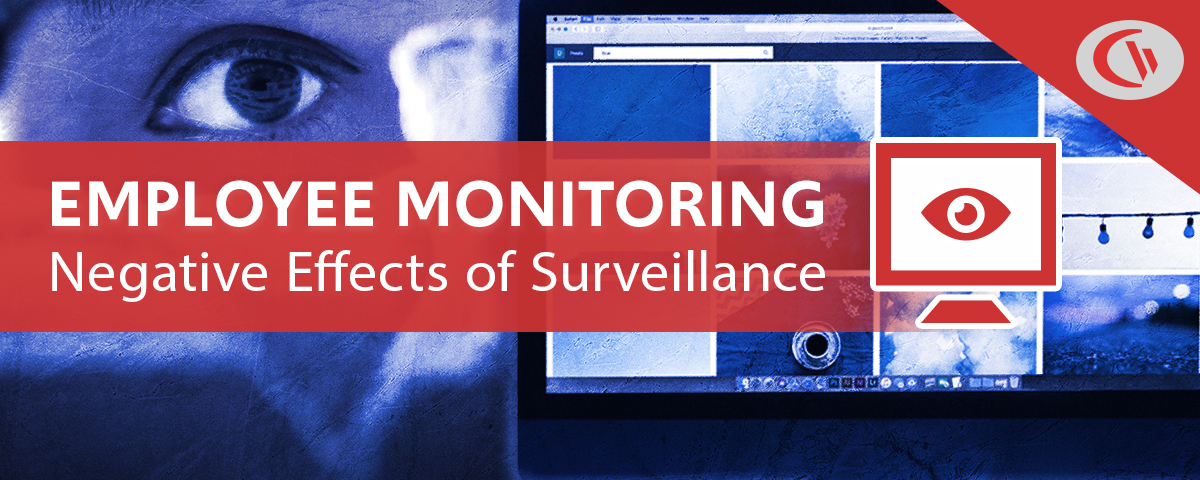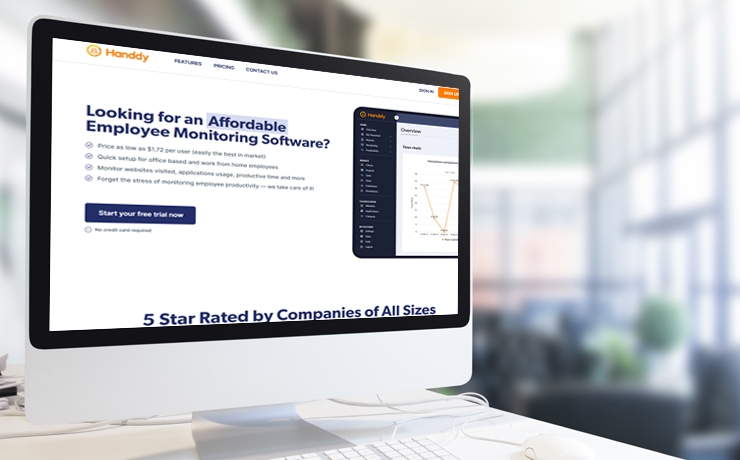Best Facts On Selecting Employee Monitoring Services
What Is The Best Employee Monitoring Software? And What Do I Need To Know Prior To Deciding It?Employee monitoring software refers to a type of software used by organizations to track and monitor the activities of their employees when they are working. Employers are able to collect information about employees' behavior, such as the number of keystrokes, web usage as well as screenshots of applications, and more. Employee monitoring software's primary goal is to improve productivity, guarantee the compliance of policies, safeguard sensitive information, and address concerns about security. A variety of aspects should be taken into consideration when choosing an employee-monitoring program. Here are some key points to keep in mind- Features- Determine the specific features you need based on the requirements of your company. Features include email monitoring and activity monitoring blocking websites and keystroke recordings monitoring application usage and monitoring email. Choose features that will align with your goals for monitoring.
Privacy and Compliance. Check that your software adheres to the applicable moral and legal guidelines. Be aware of the laws and regulations that apply in your jurisdiction. This includes privacy and data protection laws. Find software that has clear and customizable privacy settings that are in line with the rights of employees.
User-Friendliness. Think about the user-friendliness and the accessibility of the software. The time will be reduced and the implementation simplified by having a straightforward interface and set-up process. Consider a dashboard that is customizable and reporting tools that let you easily navigate and interpret the data you have collected.
Integration and compatibility - Make sure your application is compatible with the current IT infrastructure as well as any other systems you're employing, such as email clients collaborative platforms, project management tools, and operating systems. Compatibility is crucial to ensure continuous monitoring without disrupting your day-today activities.
Data Security- Evaluate the software's measures of security to protect the collected data. Data encryption, storage within a safe setting access control, as well as compliance with security standards are all essential. Make sure that the software vendor has strong data protection and security protocols.
Scalability: Consider how the software can scale to meet the requirements of your expanding business. Select software that is easily scalable to accommodate your evolving needs in the event of expanding your staff or adding new offices.
Reporting and Analytical Capabilities- Examine the reporting and analytical capabilities of the software. Find features that offer complete information on employee productivity, the allocation of time, and other trends. Customized reports and analytics can aid you in making informed choices, and pinpoint areas for improvement.
Customer Support- Evaluate the quality of support provided by the software company. Check their availability and technical support. Good customer support ensures prompt help when issues arise.
Cost- Pay attention to the pricing model of the program. It could be a once-off payment, subscription based or usage-based. Knowing the pricing structure as well as any additional costs such as support, updates or extra features is essential. Try to balance the price of your product against its value and features.
Transparency and Employee Communication - Communicate clearly with your employees about the use of software for monitoring. Transparently describe the purpose and scope, as well as expectations and the limitations of the monitoring. Discuss any concerns they may have, as well as assure them of the respect for their privacy.
You can make an informed decision by taking into account these elements and selecting an employee monitoring program that meets your needs, while respecting the privacy of employees and meeting legal requirements. See the recommended employee monitoring company for more info.

What Are The Features Available In Employee Monitoring Software And What Are The Differences Between Them?
Software for employee monitoring offers many features that can be utilized to analyze and track employee behavior. Monitoring software for employees can have different options. Here are some common ones. Activity Monitoring This feature records and records all activities of employees such as the websites visited, programs utilized, files accessed, and time spent. It provides a comprehensive overview of how employees spend their time working.
Keystroke Logging Keystroke logging records every keystroke made by employees. It helps to spot productivity issues, detect illegal activity, and provide evidence in the event of need.
Screenshots, and screen recordingsScreenshots, and screen recordings - Certain applications take screenshots of a computer screen at specified intervals. Other applications record their screen in real-time. This can be useful for monitoring productivity or troubleshooting.
Internet Usage Tracking This feature records employees' online activities, including searched for websites, visited sites downloads, etc. It helps you spot non-work related browsing, security risks or violation of policies.
Application Usage Tracking - This feature tracks the applications used by employees during work time. It allows you to see what applications are the most popular. It can also help identify excessive or unapproved applications.
Email Monitoring permits employers to keep track of all employee email. This includes received and sent emails, email attachments, received emails, email attachments and emails' content. Employers can verify compliance with their policies, prevent data leaks and look into suspicious activity.
Monitoring of documents and files - This feature lets you keep track of changes to files as well as access and transfers. It assists in protecting sensitive data by monitoring document collaboration and monitoring compliance with data protection policies.
Remote Monitoring is a feature that lets employers monitor their employees even when they work from a distance or at different locations. It allows employers to track their activities and monitor efficiency regardless of physical location.
Productivity Analysis Software to monitor employees usually comes with productivity analysis tools that offer insight into the productivity of employees as well as work patterns and time allocation. These analyses help optimize workflow and to identify areas to improve.
Reporting and AnalyticsThe robust reporting and analytics features generate precise reports and graphs based on the collected data. These reports provide valuable insights into the performance of employees, resource allocation, and time management.
Compliance and Policy Management- Some software solutions offer features to ensure compliance with regulations of the industry and company policies. They enable employers to define guidelines for acceptable usage of computers and internet access.
Alerts & Notifications - Alerts and notifications alert employees and managers about certain activities and events. As an example they might alert employees to excessive internet usage and attempts to access restricted websites, or other suspicious behaviour.
Be aware that these features are available in different software solutions for employee monitoring. When choosing software, consider the features that are compatible with your goals for monitoring and are in line with ethical and legal guidelines in your jurisdiction. Read the recommended employee monitoring services for website examples.

What Is The Law Of Compliance And Privacy For Software To Monitor Employee Performance?
It is crucial that the software used for monitoring employees adheres to compliance and data privacy laws. Software for monitoring employees must conform to certain laws regarding privacy and compliance. Although these laws may differ according to the jurisdiction but some are common. Monitoring software for employees typically includes tools that allow employers to clearly explain their monitoring policy to employees. It could be necessary to issue written notices, or request consent using consent forms. Additionally, an employee manual that provides guidelines for monitoring may be incorporated into the system.
Transparent Monitoring Polices - Employee monitoring tools promote transparency. They ensure that employees know what kinds of information is being gathered and why, as in the scope of monitoring. Employees are able to better understand their privacy rights and the limits of monitoring when policies are clear and comprehensive.
Data minimization is often used by software for employee monitoring to ensure compliance with privacy laws. The software gathers and stores only what is necessary, and eliminating unnecessary or overly detailed information. By restricting data collection to only the necessary to be monitored the software decreases the risk of privacy and encourages compliance.
Anonymization and Aggregation: Some software for monitoring employees can anonymize or aggregate data to protect employee privacy further. Anonymization removes personally identifiable information (PII) from data and makes it difficult to associate information with specific individuals. Aggregation blends data from several employees to provide insights at an aggregate level, without single out individuals.
Secure Storage of Data and EncryptionSoftware for monitoring employees prioritizes the security of data collected. Data is protected with secure storage practices for data and encryption methods. This includes protecting data while on the move and in the rest of its life.
Access Controls and Restricted Rights In order to ensure compliance, employees monitoring software typically provides access control and privileges that are more granular. Employers may limit access to monitoring data to only those individuals who need it to fulfill legitimate requirements, such as HR personnel and administrators designated by the company.
Rights and Remedies for Employees Rights and Remedies - Respecting employee rights is an essential aspect of complying with privacy and compliance laws. Monitoring software for employees typically includes options that allow employees to access and correct their own monitoring data and also make complaints. Employees can claim their rights and pursue recourse in the event of privacy violations.
Conformity to Data Protection Regulations – The employee monitoring software was designed to be compliant with applicable data protection laws including the General Data Protection Regulations in Europe and California Consumer Privacy Acts in America. The compliance process includes the implementation of measures to protect personal data and honor the rights of the data subject.
Apart from employing employee monitoring tools, organizations should consult experts in the field of law and remain up to date on laws and rules in their respective jurisdictions. In order to comply to privacy and compliance regulations requires a comprehensive strategy that goes beyond the software. This includes clearly defined policies, employee education and ongoing monitoring of compliance. Follow the top rated time tracking monitoring software for more info.
